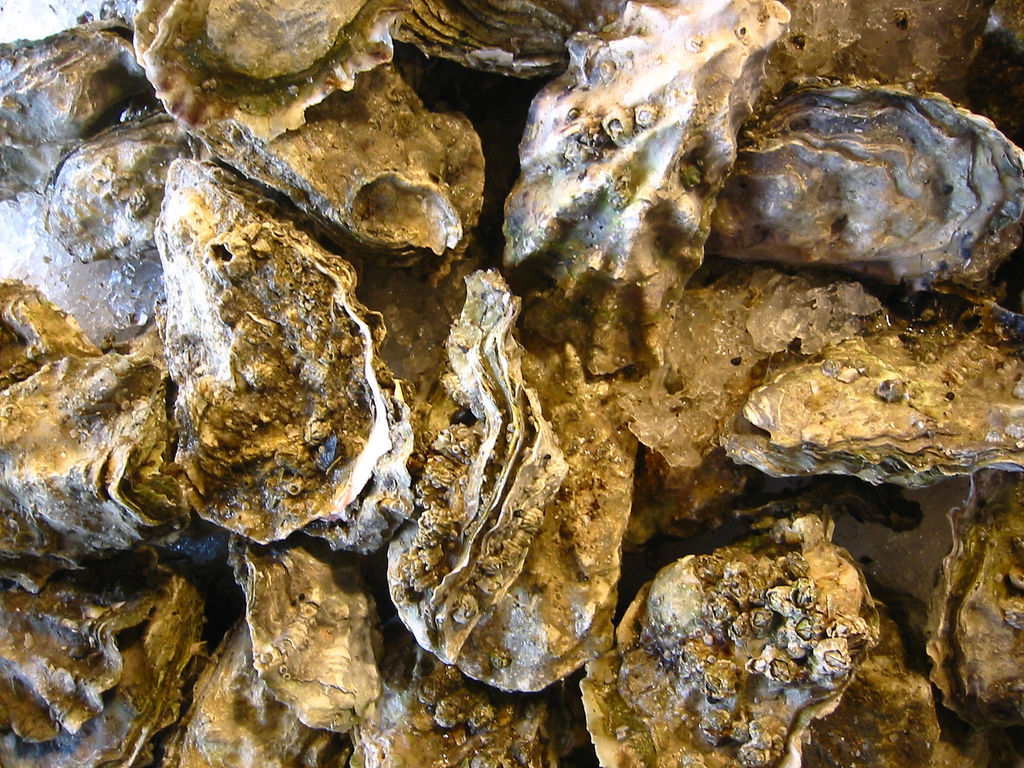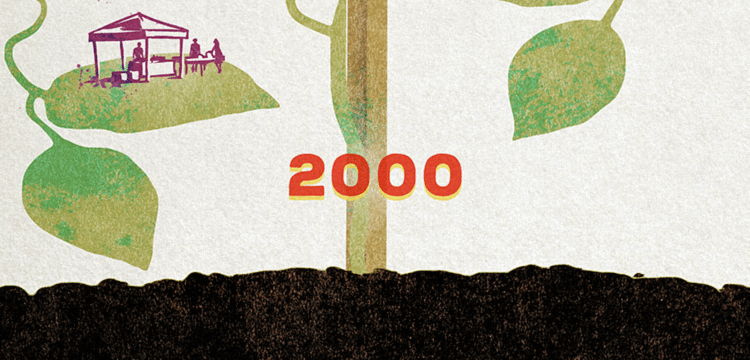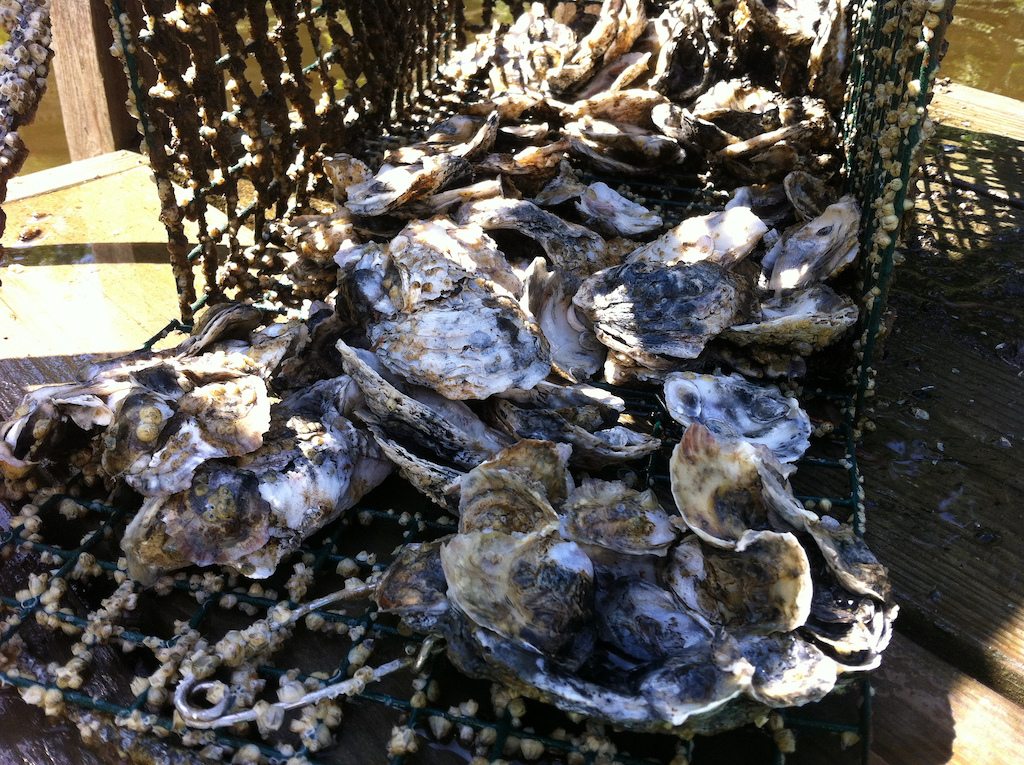“Americans have a passion for oysters, which they eat at all hours, even in the streets,” wrote Moreau de St. Mery, a French visitor to New York City in the 1790s. At the time, oysters were arguably the city’s most iconic dish: oyster harvesters shelled them for passersby at outdoor stalls near today’s Wall Street, and celebrity fishermen opened oyster cellars all over the city for wealthier clientele.
But while urban oysters’ tendency to snack on pollutants makes them poisonous to humans, it also means they’re pretty effective at cleaning up their surroundings. A single two-inch organism can filter up to 50 gallons of water in a day, and conservationists have seized on the notion that re-seeding the beds along the coasts of New York and New Jersey could start to revitalize the Hudson-Raritan Estuary and ultimately clean the water enough to support the edible oyster gardens that have been barren for nearly a century.
A pile of oyster shells sits on a dock
Initiatives like the Billion Oyster Project, which enlists high school students to build and monitor oyster beds, have seeded more than 25 million oysters to date and won glowing write-ups in the press. All in all, oyster restoration seems like a pretty uncontroversial endeavor: They clean up the water, they foster connections between students and the environment, and they’re grown in closed waters where fishing is prohibited. What could go wrong?
A lot. Even though the hard-shelled cleanup crews make for great feel-good media fodder, they also make regulators and seafood sellers really nervous. There’s always a risk that someone could poach oysters from contaminated waters, sell them to local restaurants, and sicken hundreds of people. Any major outbreak would hurt the industry as a whole, not just the people who get sick. That’s why, in 2010, the New Jersey Department of Environmental Protection banned restoration projects in “contaminated waters,” a move that “deems 99% of the NY-NJ harbor off-limits,” according to New York/New Jersey Baykeeper.
A new study by researchers at Cornell University looks at some of the barriers to support for new oyster restoration projects in the Hudson-Raritan Estuary. Jason Holley, a Ph.D. candidate in Communications, says that there are three main concerns that pop up repeatedly in conversation with regulators, commercial oyster farmers, and NGOs: the public health risk posed by poached oysters, the economic risk of contaminated seafood in the restaurant industry, and doubt or lack of clarity about oysters’ positive impact on the environment.
He’s talking about one side—the NGOs and conservationists, who might be more interested in hearing about potential environmental benefits—versus the commercial oyster harvesters, who might be more concerned about food poisoning and consumer perception.
After surveying people from both parties, Holley found that the theory that different stakeholders needed to hear different messages didn’t hold water. “When you’re looking at public health risks and economic risks and ecological benefits, these are variables that are perceived similarly among the two groups,” he says.
But even if everyone ultimately agrees that oyster restoration is a net positive, it’ll take action from the New Jersey Department of Environmental Protection to allow for a real expansion of revitalization projects.
In the meantime, small-but-mighty restoration projects press forward. New York/New Jersey Baykeeper recently marked a milestone at the military base where it runs a pilot project: In November 2017, its oysters reproduced naturally for the first time. That means they’re one step closer to becoming a self-sustaining population, even if it might be years before they’re edible again.











